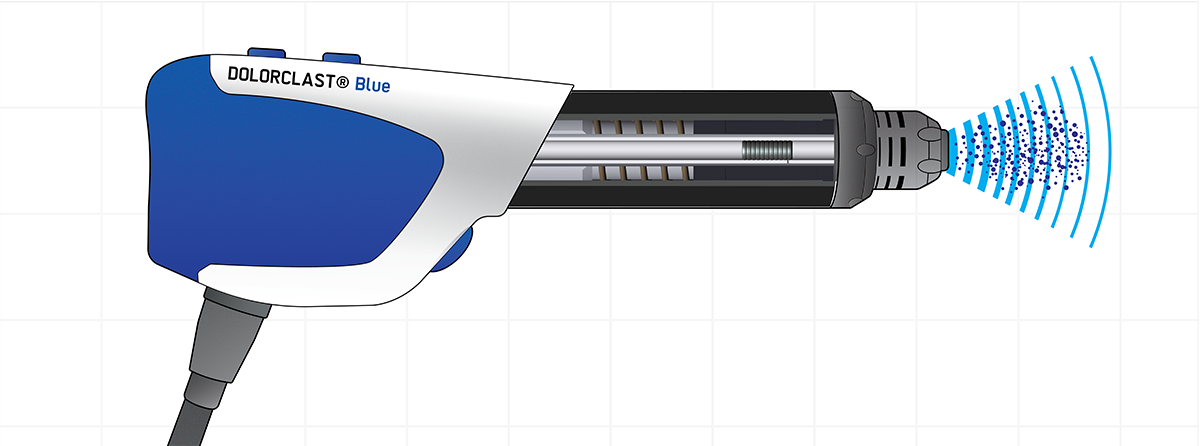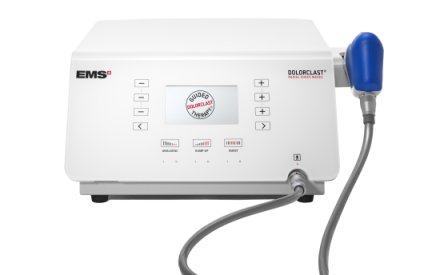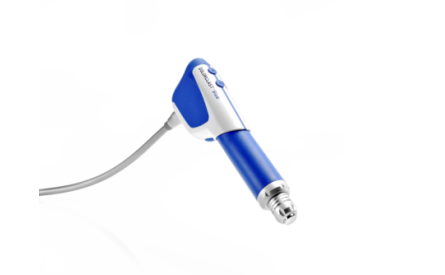
PERFORMANCE EXCEPTIONNELLE du DolorClast® D'EMS
La thérapie par ondes de choc extracorporelles radiales (rESWT) est une méthode de traitement sûre et efficace pour une variété de troubles musculo-squelettiques. Son efficacité dépend de l'énergie délivrée par les appareils selon des paramètres cliniquement pertinents et fondés sur des données probantes.1 C'est pourquoi les chercheurs ont commencé en 2015 à étudier les différences entre les différents appareils de thérapie par ondes de choc extracorporelles radiales en termes d'énergie délivrée.2
Ces différences ont été approfondies dans une récente étude comparative menée par Nina Reinhardt et ses collègues de l'Institut Helmholtz d'ingénierie biomédicale, RWTH Aachen (Aix-la-Chapelle, Allemagne).3 Les auteurs de cette étude ont comparé les dernières ondes de choc radiales - EMS DolorClast® Radial Shock Waves - et le Storz MASTERPULS® 200 ultra. Ils ont constaté des différences substantielles concernant l'énergie totale pouvant être délivrée à un patient.3
Les dispositifs d'ondes de choc radiales varient considérablement dans leur capacité à délivrer de l'énergie.
Pourquoi est-ce important pour les praticiens ? Parce que les dernières recherches scientifiques fondamentales et cliniques ont confirmé l'importance de délivrer des énergies plus élevées pour obtenir de meilleurs résultats de traitement. Pourtant, tous les appareils ne sont pas capables de délivrer des énergies élevées. Vous trouverez ci-dessous de plus amples informations à ce sujet.


